What's New
Displaying results 3821 - 3830 of 4899
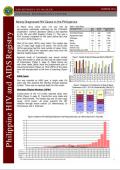
Resource | Fact Sheets,
In March 2011, there were 172 new HIV Ab seropositive individuals confirmed by the STD/AIDS Cooperative Central Laboratory (SACCL) and reported to the HIV and AIDS Registry (Table 1). This was a 43% increase compared to the same period last year (n=120 in 2010) [Figure 1].
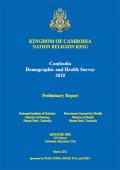
Resource | Publications,
This report presents preliminary findings of the 2010 Cambodia Demographic and Health Survey (CDHS) which was conducted by the National Institute of Statistics of the Ministry of Planning and the Directorate General for Health of the Ministry of Health of Cambodia.
The 2010 CDHS, the third of its kind, follows the surveys that were successfully conducted in 2000 (the 2000 CDHS) and in 2005 (the 2005 CDHS). The 2010 CDHS provides data to monitor the population and health situation in Cambodia. Specifically, the 2010 CDHS collected information on a broad range of demographic, health, and social issues such as household characteristics, utilization of health services, maternal and child health, breastfeeding practices, early childhood mortality, maternal mortality, nutritional status of women and young children, fertility levels, marriage, fertility preferences, awareness and use of family planning methods, sexual activity, and awareness and behavior regarding AIDS and other sexually transmitted infections.

Resource | Publications,
This is the second consolidated report on the achievements of the Regional Programme for East Asia and the Pacific. The focus remains squarely on articulating the contribution to development results, rather than simply providing an account of activities that have been carried out over the preceding 12 months.
East and South-East Asia is one of the most rapidly developing parts of the world. Global experience has shown us that positive and welcome developments, such as increased mobility of goods, services and money as well as the availability of information and communication technologies, simultaneously provide opportunities for transnational organized crime to expand. An uneven distribution of economic opportunities also produces significant domestic and international migration, which often disrupts communities and isolates vulnerable individuals. Rapid urbanization can also generate zones of anonymity and insecurity where criminality emerges and the law is challenged. This in turn adds impetus to both the demand for and supply of illicit drugs, for forced labour, for sex workers, for counterfeit products and for limited or protected natural resources (like timber, fish and wildlife).
For this reason, in addition to accounting for what we have achieved in 2010, we also attempt to outline the new and emerging threats and how we can best respond to them.
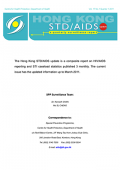
Resource | Publications,
The Hong Kong STD/AIDS update is a composite report on HIV/AIDS reporting and STI caseload statistics published 3 monthly. The current issue has the updated information up to March 2011.
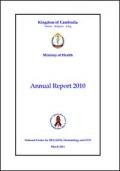
Resource | Publications,
This report describes the achievement of program implementation on HIV/AIDS and STI prevention, care, support and treatment during the year 2010. The report is intended to aggregate data and information collected from all OI/ART, VCCT, Family Health Clinics, HBC, and PMTCT sites from the whole country to be represented as the National Comprehensive Report for the health sector response to HIV/AIDS and STI in Cambodia. The following sections reported the main three program areas implemented for this year that are including: A) General Report related to Programme management and implementation; B) Results from health service deliveries; C) Financial Report for descript the financial disbursements against the yearly budget plan; D) Procurement of OI/ARV Drugs, E) Challenges etc.
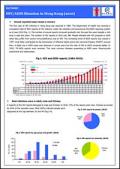
Resource | Fact Sheets,
The first case of HIV infection in Hong Kong was reported in 1984. The Department of Health has received a cumulative total of 4832 reports of HIV infection under the voluntary and anonymous HIV/AIDS reporting system as of year 2010. The number of annual reports increased gradually over the past few years despite a mild drop in past two years. The number of HIV reports in 2010 was 389. People infected with HIV progress to AIDS when they suffer from severe immunodeficiency due to HIV. The increasing trend of AIDS reports was ceased in 1997, most likely contributed by the introduction of effective highly active anti-retroviral therapy (HAART) around then. A slight rise in AIDS cases was observed in recent years but the ratio of HIV to AIDS remained stable. In 2010, 79 AIDS reports were received. The most common illnesses presenting at AIDS were Pneumocystis pneumonia and tuberculosis.
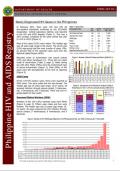
Resource | Fact Sheets,
In February 2011, there were 159 new HIV Ab seropositive individuals confirmed by the STD/AIDS Cooperative Central Laboratory (SACCL) and reported to the HIV and AIDS Registry (Table 1). This was a 22% increase compared to the same period last year (n=130 in 2010) [Figure 1].
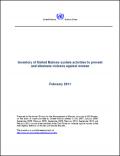
Resource | Tools,
In February 2008, the Secretary-General of the United Nations, Mr. Ban Ki-Moon, launched his Campaign "UNiTE to End Violence against Women", 2008-2015. Through the Campaign, the Secretary-General is spearheading the accelerated efforts of the United Nations system to address violence against women. This inventory gives an overview of past and ongoing activities on violence against women by the entities of the United Nations system, including those which will contribute to the achievement of the five key outcomes of the Secretary-General’s Campaign by 2015. It is compiled by the Division for the Advancement of Women, now part of UN Women, as a contribution to the work of the Task Force on violence against women of the Inter-Agency Network on Women and Gender Equality.
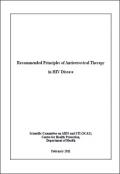
Resource | Publications,
In 2005, the predecessor of this Committee, Scientific Committee on AIDS, published its set of recommended principles of antiretroviral therapy to provide general guidance for the use of antiretrovirals in Hong Kong. The document stated nine major principles of antiretroviral use.
Since then, progress has been made in the realm of HIV management. There have also been corresponding changes in local practice. This Committee therefore undertook to re-examine the document with a view to updates where appropriate. As before, the effort focussed on major principles rather than details of antiretroviral use.
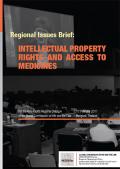
Resource | Publications,
This Regional Issues Brief has been written to provide an overview of an area of enquiry that the Global Commission on HIV and the Law is examining – issues of laws pertaining to intellectual property rights and access to medicines. It has been undertaken through a literature review of laws and documentation of their enforcement in the context of Asia and the Pacific. It serves as an information resource and complements the report of the Regional Dialogue for Asia and the Pacific that was held under the auspices of the Global Commission on HIV and the Law in Bangkok on 16 and 17 February 2011.
Significant advances in treatment access in the Asia Pacific region have resulted from the work of activists who have campaigned to ensure that intellectual property laws do not impose unreasonable constraints on access to HIV medicines. Activists have achieved a number of successes through campaigning and litigation in Thailand and India. The focus of campaigning has been on challenging overbroad patents and trade agreements that block production and importation of affordable generic versions of HIV medicines. The legal response to access to medicines in the region continues to be influenced by heated policy debates between consumer activists and the mainstream pharmaceutical industry.





